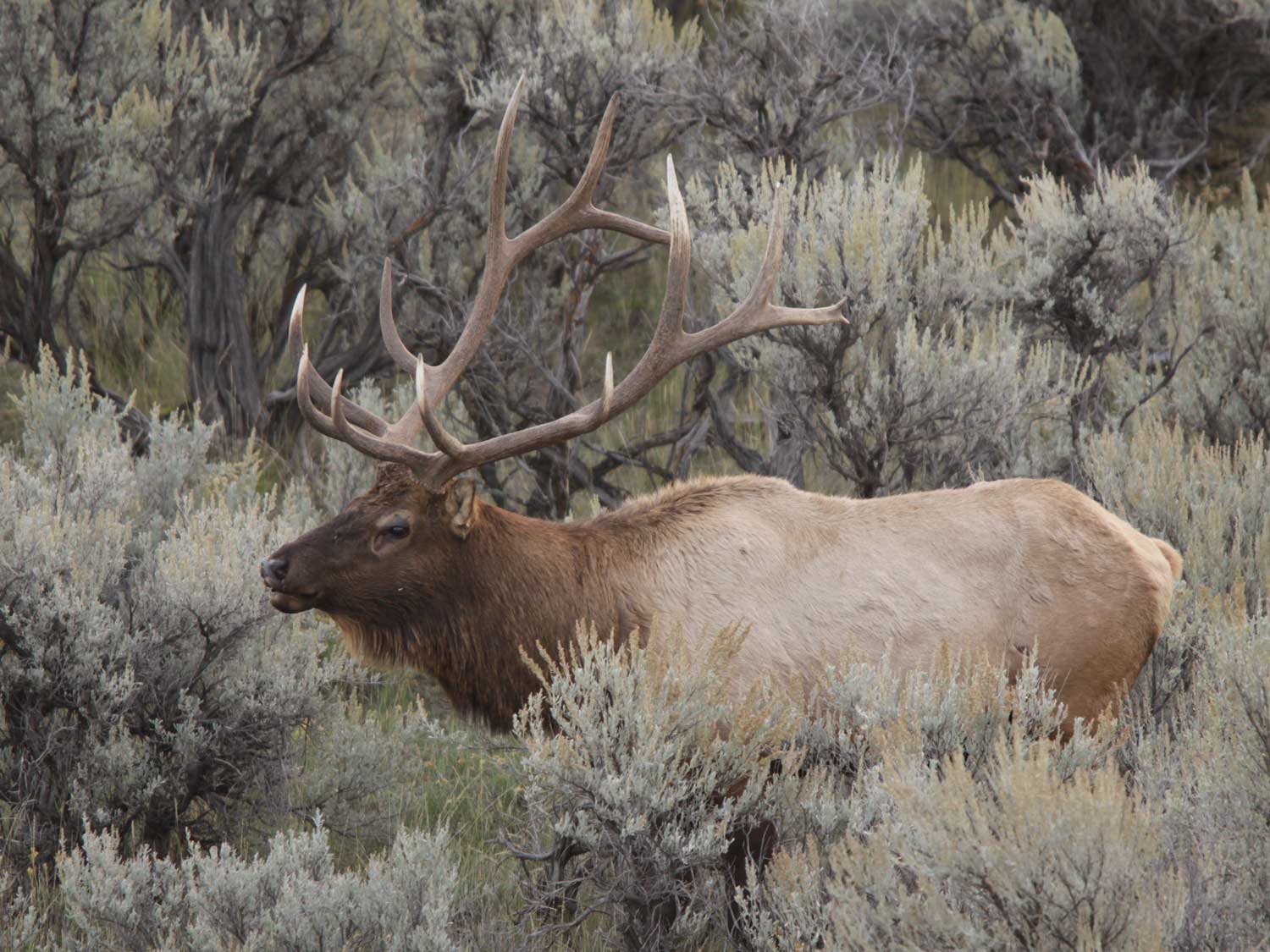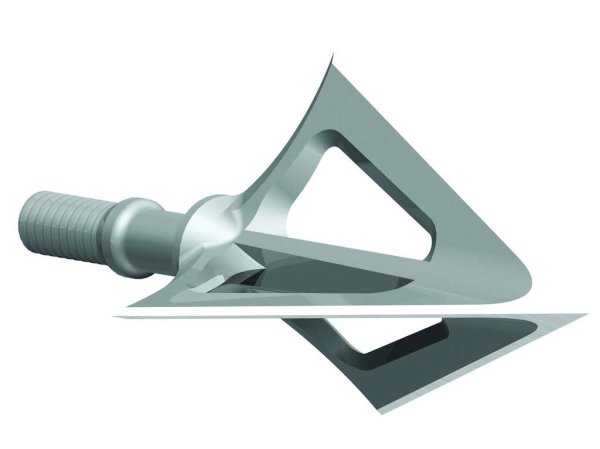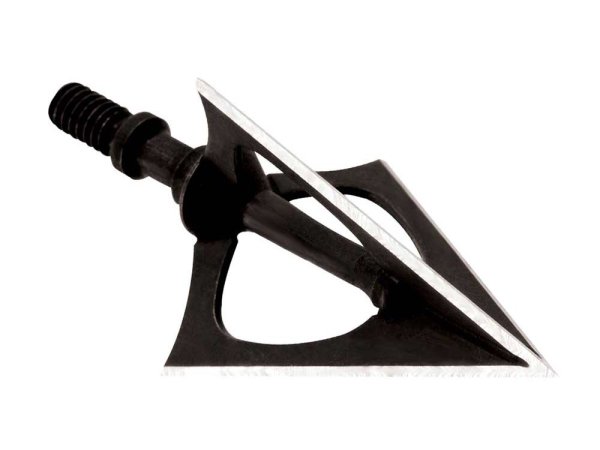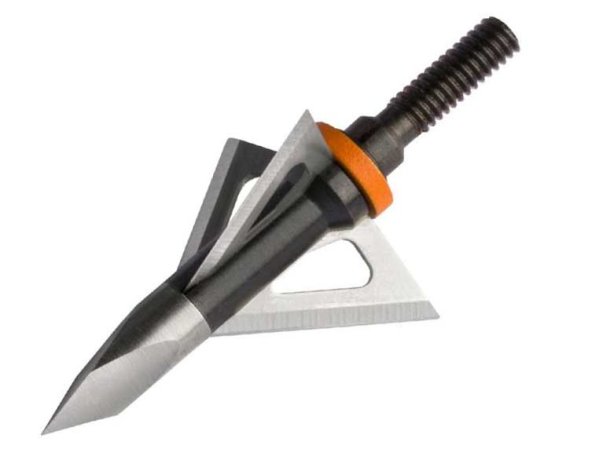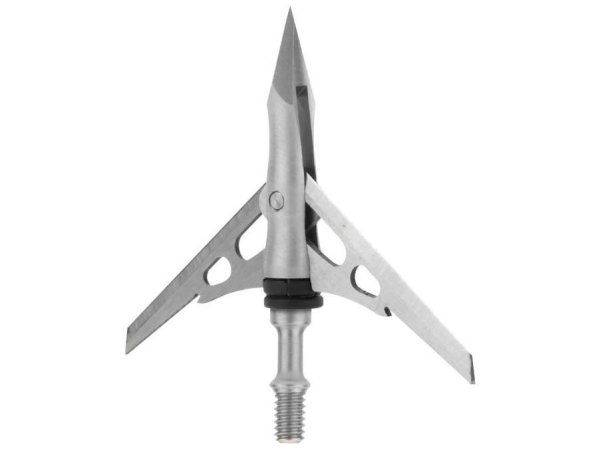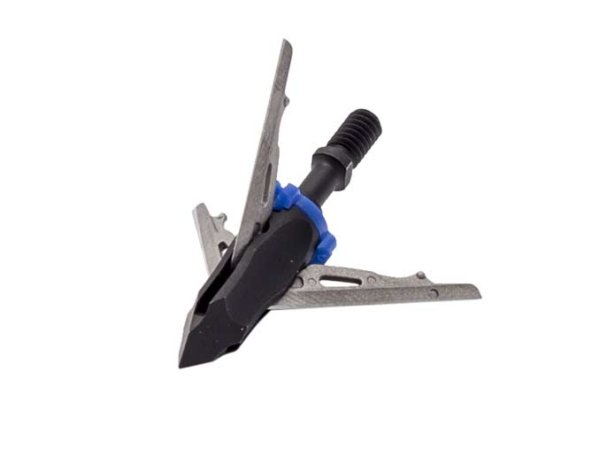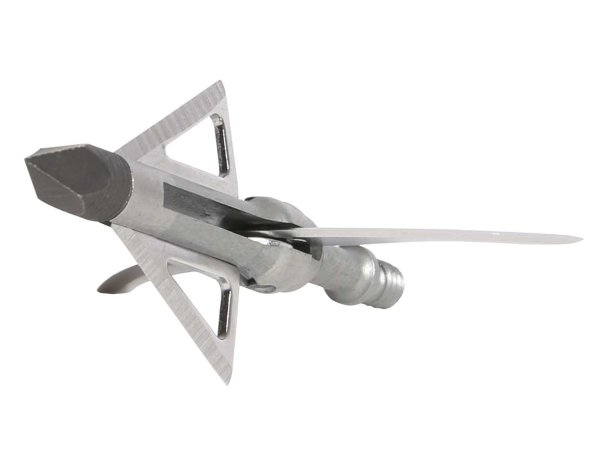
At the moment neither of us could have cared who was more shocked at the 10-yard, surprise run-in—the elk or me. As the herd bull lunged to escape through the maze of lodgepole pines I came to full draw and mouth-mewed the call of a curious cow. At a 30-yard, safe-space distance, the bull braked hard and cranked broadside to seemingly see if his aged eyes were playing tricks on him. Before he had time to figure out precisely what was going on, my broadhead buried itself behind his shoulder. He was off again, but as is common with double-lunged bulls you usually get to watch the last wobble and appreciate the work of a great archery setup.
Bowhunting geeks love analyzing gear. For elk, the debate can reach heated levels—especially when it comes to broadheads and arrows. Woodland whizzes have tested every combination of broadhead and arrow known to man on these giants. There is, however, no real winner and no easy answer to the discussion. But we’ll try anyway.
If you want a short end to this article, consider that your current whitetail setup is likely suitable to take elk. The reason for this simple statement lies in the explosion of technology introduced into archery within the last several decades, particularly the last 10 years.
Bows have more energy and transfer it more efficiently than ever before. Arrows have been beefed up and slimmed down for better penetration. Lastly, broadhead designs, both fixed and mechanical, have been improved with sharpening expertise that forces you to be extra careful when attaching broadheads to the end of your arrows. In short, a new compound bow set to 60 pounds and matched correctly to a quality arrow, and broadhead setup will cleanly take an elk with a double-lung hit. Heck, I know of several bowhunters who have taken elk with bows dialed back to 50 pounds. However, setting aside that simplistic overview, there are some specifics to consider as you look at long sticks and sharp points for your bow. First, get to know that that burly bull you hope to hurl projectiles at like your prehistoric ancestors.

Target Familiarity
Although your current archery setup likely can handle an elk, you need to understand the distinct differences between elk and deer. A mature bull can surpass 800 pounds and a matriarch cow can weigh more than 600 pounds. Your arrow combination has to pass through more animal matter and push past bigger obstructions to reach an elk’s engine room.
For angling shots, your arrow has to have enough energy to slice through a bale of hay if the elk is positioned at an extreme slant. For broadside shots you need to steer clear of the tree-stout leg bone, the high-riding scapula and hopefully maneuver through the jail cell of ribcage bones that protect the vitals. Leg bones stop nearly all arrows and the scapula ranks equal to body armor, but most well-constructed broadheads can navigate the ribs to dart into the heart-lung area.
Fortuitously, elk offer you a big target of vitals that accompany that big frame. The vital zone measures approximately 15 inches in circumference. Best of all, these big critters can’t go far when the air is released from their lungs in a double-lung tap. My last four bulls all expired in full view for an ending that tops any Broadway hit. Know your personal shooting limits, concentrate on shot placement and keep environmental factors in mind when you launch.
Read Next: 7 Secrets for Bowhunting Bull Elk
Fixed-Blade Broadhead Pros and Cons
For years, fixed-blade broadheads were the sharp point of choice. Their rugged nature and non-mechanical approach combined to fell many elk in the Rockies. In fact, there was a point in the past 20 years that elk outfitters would only allow clients to use fixed-blade heads on their booked hunts due to the horror stories of mechanicals.
Fixed-blade broadheads aren’t perfect though—never have been. They can be difficult to tune and bow speeds enhance steering issues. Further, new, out-of-the-package heads should be shaving sharp, but touching up used heads is a chore. A few even have toughness and mechanical issues, particularly those with replaceable blades.
That leads to the big positive of fixed-blade heads for elk. They are rugged, especially if they are of one-piece construction. This simplistic design removes moving parts, thus eliminating any surprise malfunctions during the hunt. Another bonus, albeit small, is the saved energy. Without any deployment of blades, a fixed blade begins cutting without having to unfold. This extra power gives you an edge in cutting far through elk vitals, especially with the modest cutting diameter of most fixed blades.
Several 3-blade models to consider in the fixed-blade category include the ever-popular G5 Montec. You can choose between 85-, 100- and 125-grain models with a carbon steel option available in 100 grain. Stick with the 100- and 125-grain models for elk with their 1 1/8-inch cutting diameter and option to re-sharpen.
Similar to the G5 is the New Archery Hellrazor. Available in 100- and 125-grain, these one-piece heads are durable and slice through leaving a 1 1/8-inch wound channel. You can re-sharpen and use these tough broadheads over and over again.
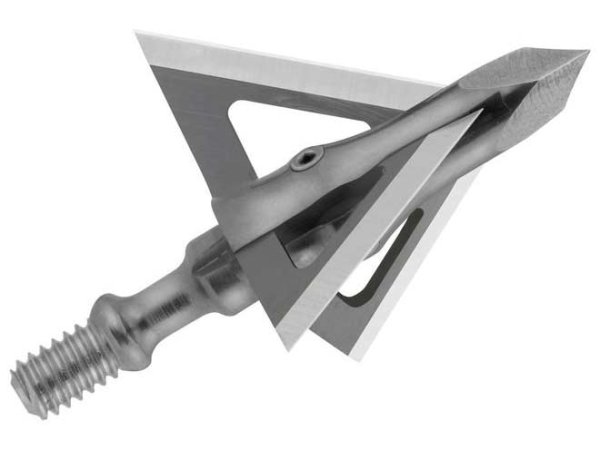
If you prefer replaceable blades rather sharpening, consider the various models of Muzzys that have satisfied elk hunters for years. Leading the lineup is the 100-grain Trocar with a helix design to aid in flight stabilization. It cuts with a 1 3/16-inch diameter for ideal blood trailing with a strong stainless steel ferrule, a chisel tip and ease in replacing blades.
Wasp is a name synonymous with modern archery history and their 100-grain Drone meets the specs for elk country. The all-steel construction of the Drone means it will take a beating, yet delivers a cutting diameter of 1 1/8-inches. After your success you can replace the blades and be ready for the next hunt.
Mechanical Broadhead Pros And Cons
Like the compound bow of yesteryear, mechanical broadheads are gaining steam throughout all bowhunting genres. Once shunned at elk camp, mechanicals now firmly hold a place in the hunt for big backstraps. My son, for example, took his first two bulls, mature six-points, using Rage broadheads. Both died in seconds leaving a blood trail as easy to follow as a Hollywood red carpet.
The benefits of mechanical broadheads are many. Their field-point profiles make them easy to tune. They fly accurately, even at long range due to their wingless nature and tendency not to catch the wind like a fixed blade.
For fans of giant blood trails, most mechanicals can deliver. The cutting diameter oftentimes exceeds those of the fixed-blade variety with many hitting the mark at 1 7/8 to 2 inches. Some models even deliver 3-inch cutting diameters, but remember that too much of a good thing can reduce penetration.
The majority of mechanical broadheads offer ease in replacing blades and some can even be touched up for surgical sharpness. That’s always a bonus since archery success is based on hemorrhaging results, not overall trauma as in firearm hunting. Regrettably, like fixed blades, mechanicals do have some cons to consider.
Read Next: 13 of the Best New Broadheads
Topping the list of reasons to ponder using a mechanical broadhead is the fact they are, well, mechanical. Moving parts, containment mechanisms, and proper deployment all complicate hole-punching capability. Mechanicals have been known to fail, nick vegetation and deploy in flight, or fail to deploy totally upon impact. You may get a couple chances at whitetails over the course of a season, but you get one elk tag every so often and on a hunt you usually only get a single chance to draw back on an elk. Do you want to bet the farm on an unknown?
Fortunately, the bugs have been worked out of the leading mechanicals and you rarely hear of one bombing on a hunt anymore. Consider, too, that mechanicals steal some potential kinetic energy—particularly if you are shooting a low-poundage bow. At 70 pounds, you’re in pretty good shape, but if you’re only shooting 55 pounds know that a portion of energy is being used to expand those blades. Rear-sliding blades, however, use exponentially less kinetic energy when the slicing begins.
There are several mechanical broadheads to consider. One is the 100-grain Rage Hypodermic. Rage has been leading the way with mechanical success for much of the mechanical revolution and the Hypodermic’s one-piece ferrule strength holds up to elk physiology. Its combination chisel and cutting tip makeup makes it a head to seriously consider. The rear-sliding blades finish the slice with a 2-inch cutting diameter.
Somewhat new on the block, SEVR has several models available for big game hunting. For elk, consider the Titanium 2.1 available in both 100- and 125-grain versions. As the name suggests, this mechanical has a large, 2-inch cutting diameter, but touts itself on the lockable pivot function that allows the broadhead to keep moving forward even after hitting bone or with an angling shot. The ferrule is constructed of titanium for the ultimate in strength and forward-motion penetration. Best of all, you can order them in any amount you desire without packaging limitations.
G5 also has a solid reputation and its 100- and 125-grain Deadmeat 3-blade mechanical meets the demands of elk. Its a rear-deploying broadhead looks like a fixed-blade and leaves a 1 ½-inch wound channel that begins with a chisel-tip entrance. The G5 SnapLock system guarantees blades stay in place until needed.
Lastly, how about a hybrid? The Bloodsport Gravedigger series includes both a cut-on-contact and a chisel-head version. Each is available in 100- and 125-grain models. If you want to shoot it as a fixed-blade, simply tighten a set screw and the head. Leave the screw in the factory setting and the bleeders will deploy for a 1 ¾-inch cut.
What To Know About Elk Arrows
A broadhead doesn’t work without the stick that’s behind it and your stick should be stout. The biggest consideration should be overall weight. While many bowhunters believe that heavier arrows enhance penetration, others tend to go lighter for better trajectory. Both sides have merit, but overall arrow selection again comes down to your draw weight and draw length.
Carbon is the initial material of choice, but models such as the Easton Full Metal Jackets, can improve durability without sacrificing flight performance. In addition to a sturdy setup, check for straightness with tolerances of plus or minus .003 inches being the accepted industry standard. Easton, Carbon Express and Gold Tip, all offer arrows that meet elk demands. I’ve taken multiple elk with both the Carbon Express Maxima Red and Easton FMJ.
Read Next: Your 3-Part Game Plan for Elk Bowhunting Success This Fall
Diameter must be considered as well. The trend is toward a smaller diameter arrow and again much of that comes down to matching your personal bow specifications. That noted, an overall thinner diameter on the arrow mated with smaller vanes show that a smaller diameter arrow penetrates better and catches less wind due to their smaller overall profile. Match that profile with reduced vane size like the popular Blazer and your arrow should act like a rocket, not a hang glider.
Put your arrow and broadhead together, and you should come up with a combination weighing from 350 to 450 grains, though some higher-poundage bows can handle arrow weights closer to 500 grains. With the arrow weighed, your next goal should be to calculate the bow’s kinetic energy. Visit a bow shop pro to chronograph your bow and then sharpen a pencil.
To determine your bow’s kinetic energy, take the velocity squared and multiply it by the weight of your hunting arrow. Now divide that result by 450, 240 and you end up with a number equaling the foot-pounds of kinetic energy of your bow. For elk, your bow should produce in the range of 60 foot-pounds of energy and above for ideal penetration. Keep in mind that the further your arrow travels the more energy it loses.
Hunting with a newer compound bow and using a quality broadhead-arrow combination will kill most elk. Put the arrow where it needs to go without taking risky shots and your freezer will be full of white packages of meat appreciation.
